Limited Edition German Salt Glaze Stein – Medieval Knights Relief, RARE No. 1715 of 5000 (Western Germany), c. 1979 🍺🇩🇪🛡️
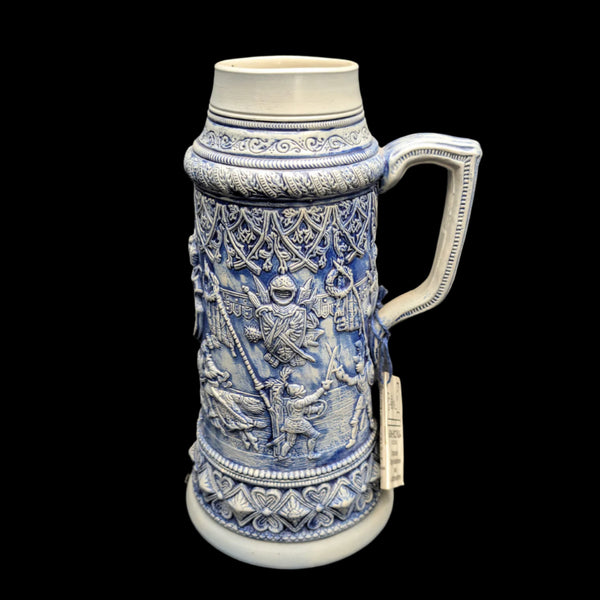
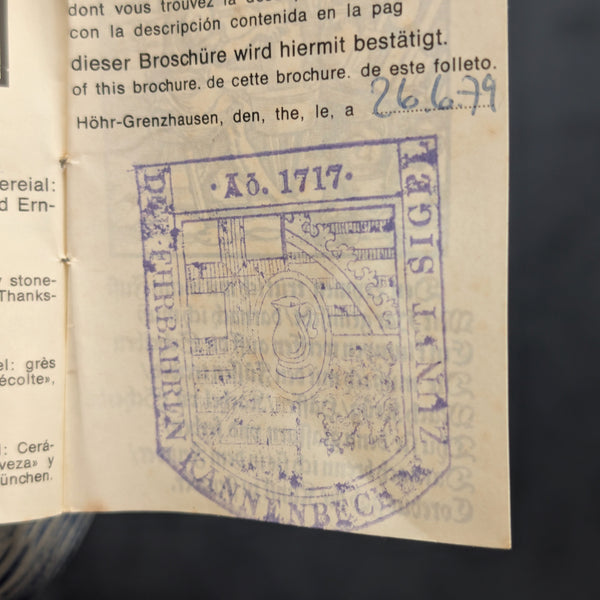
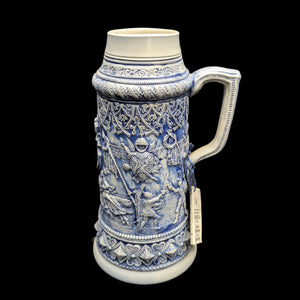
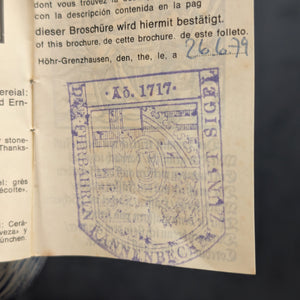
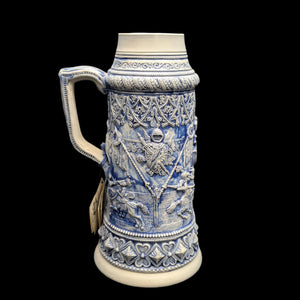
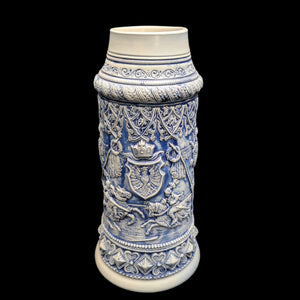
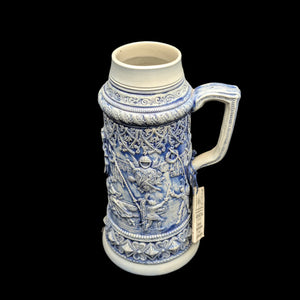
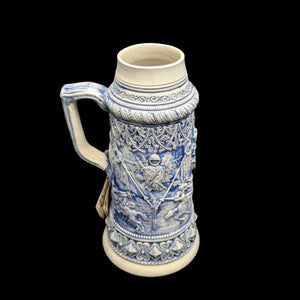
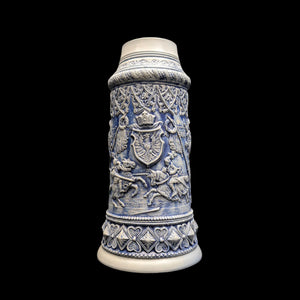
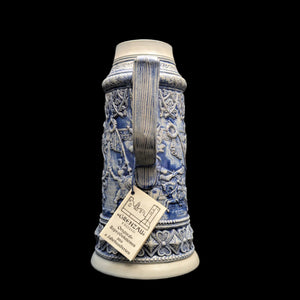
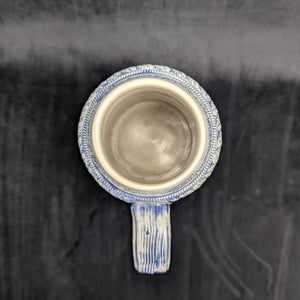
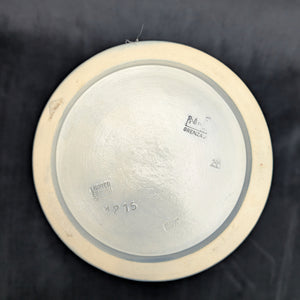
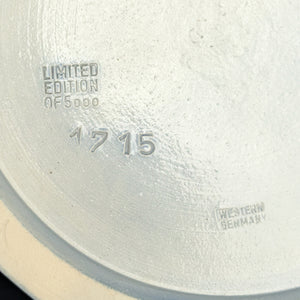
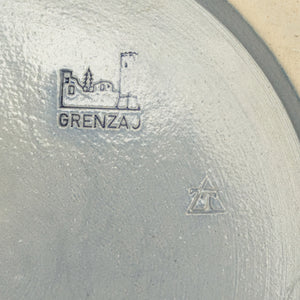
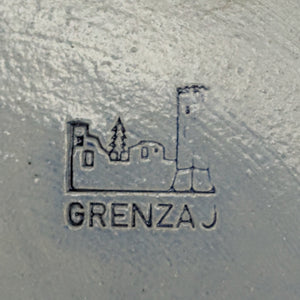
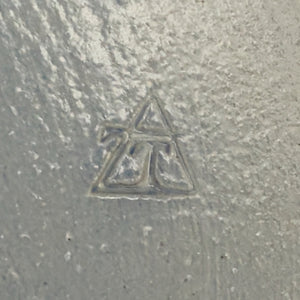
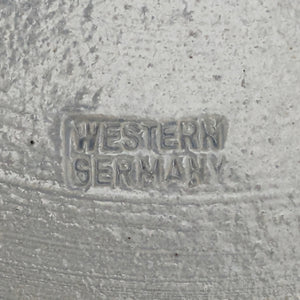
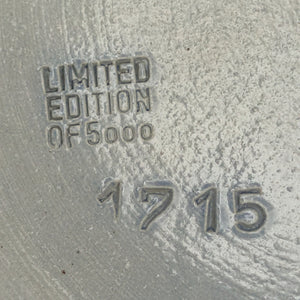
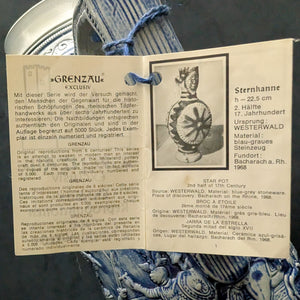
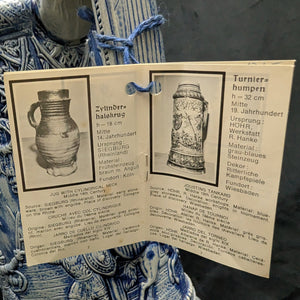
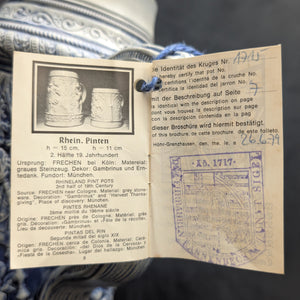
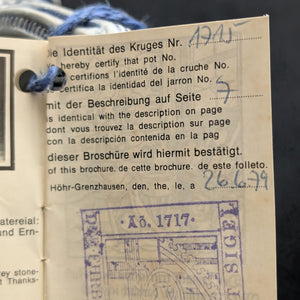
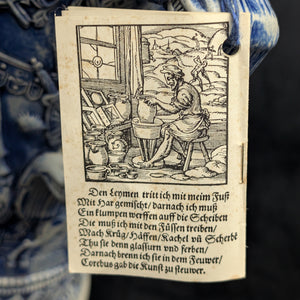
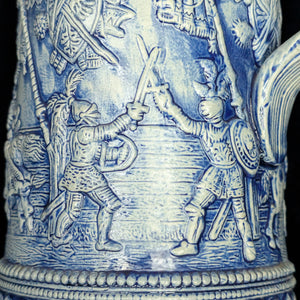
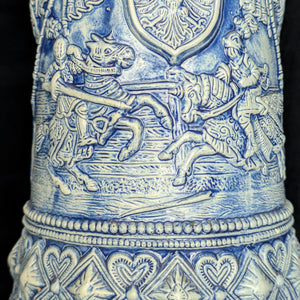
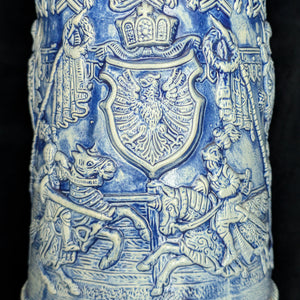
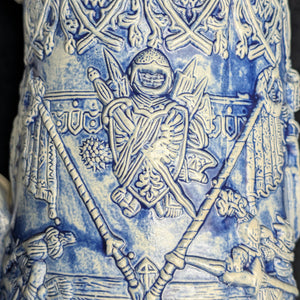
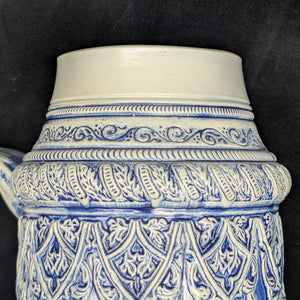
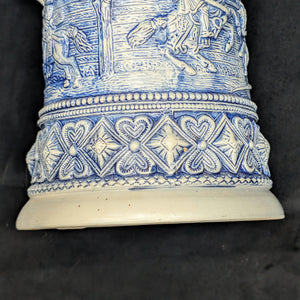
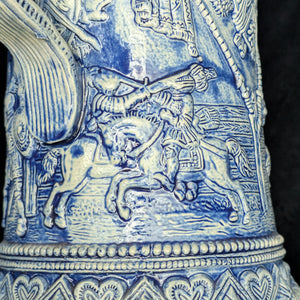
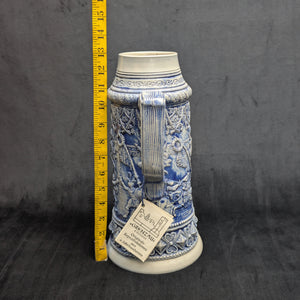
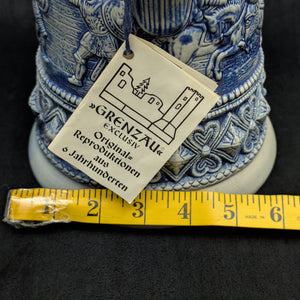
This is a RARE and highly desirable limited edition German ceramic stein with its original paper documentation and a handwritten production date. Crafted in the renowned stoneware region of Höhr-Grenzhausen, Western Germany, this large vessel features an incredible amount of detailed relief imagery.
The stein is a top-shelf collectible, confirmed by its "Limited Edition" status (No. 1715 of 5000) and its full documentation, which elevates its value well beyond a common piece. The intricate medieval patterns and the classic blue and white salt-glaze finish make it a statement piece of decorative history.
2. About the German Stein 📖✍️✨
This large stoneware stein is designed as a highly decorative art piece that continues the tradition of German relief-molded drinking vessels. Its impressive size and detailed, wraparound relief panels make it a natural centerpiece for any collection.
The primary decorative themes are chivalric and heraldic, featuring jousting knights on horseback and complex coats of arms framed by intricate gothic tracery. The blue and white salt glaze finish is a hallmark of the Westerwald region, utilizing the color contrast to dramatically highlight the complexity and depth of the relief work. The design invites a closer, detailed look at the historic scenes and symbolic motifs it depicts.
3. About the Maker: The Grenzau Tradition ✍️🏛️
This stein originates from the famous Westerwald region of Germany, a center for stoneware production since the Middle Ages. The town of Höhr-Grenzhausen is particularly known for its skilled master potters, whose work defined the blue and grey salt-glaze technique globally.
The specific maker, identified by the "GRENZAU" mark, is operating within a long-standing tradition of German ceramics. While this piece is a 20th-century creation, its original tags explicitly state that it is a "reproduction" of designs from previous centuries. The craftsmanship honors the enduring heritage of German stoneware, renowned for its durability and complex relief work.
4. Historical/Political Era Context 🌍🕰️📜
This stein was created in Western Germany and is explicitly dated June 26, 1979, placing it during the height of the Cold War and the distinct period of a divided Germany. The "WESTERN GERMANY" mark is a key historical indicator, confirming its origin in the Federal Republic of Germany.
The stein's imagery connects it to the much older chivalric culture of medieval Europe. The scenes of knightly jousting and heraldic shields are faithful reproductions of classic motifs found on German steins dating back to the 14th through 17th centuries. This piece serves as a cultural artifact that connects modern craftsmanship with a deep, romanticized history of German heritage.
5. The Ideal Collector 💡🧐🏛️
This fully documented, limited edition stein will appeal to a sophisticated collector with a specific interest in European historical artifacts. The ideal buyer is a serious stein collector who prioritizes verifiable production history and mint condition pieces.
It is also an acquisition for a German heritage enthusiast or a curator of medieval-themed décor. The precise limited edition number of 1715 of 5000 makes it a unique and highly valued find that belongs in a meticulously maintained personal collection.
6. Value & Rarity 💎✨🏛️
This limited edition stein is valuable because of its primary source documentation and limited edition status. It is not a common item; it is one of only 5,000 produced.
The original tags and certificate provide a direct, verifiable link to its production in 1979, making it an authentically dated object approximately 46 years old. This level of specific, documented history elevates its value well beyond a standard marketplace item. The pristine, like-new condition and the exceptional level of detail in the relief carving make this piece a superior and compelling addition to any collection.
7. Condition 🔎📚✨
This vintage stein is in pristine, collector-grade condition, showing no signs of use or damage.
-
Structural Integrity: The stein is structurally perfect, with no visible chips, cracks, or damage to the ceramic or the deep relief work.
-
Glaze and Decoration: The blue and white salt glaze is uniform, glossy, and fully intact.
-
Original Documentation: The original paper tags and certificate are still attached and are in excellent vintage condition, with only minor wear consistent with age, which adds to the item's authenticity.
-
Base Markings: The limited edition marks and the "WESTERN GERMANY" stamp are clearly visible on the base.
8. Fun Facts & Unique Features 🤓📜🤩
-
Salt Glaze Technique: The distinctive salt glaze finish, characterized by its pitted, glassy texture, is created by throwing salt into the kiln during the high-temperature firing, causing a chemical reaction with the clay.
-
The Mark of the Castle: The "GRENZAU" mark often includes a graphic of the Grenzau Castle ruins, a nod to the area's medieval heritage and its deep connection to the stoneware trade.
-
The Western Germany Mark: The base is marked "WESTERN GERMANY," a phrase that dates the piece specifically between 1949 and 1990, providing a precise historical window for the item’s production.
-
Verifiable Date: The accompanying hand-written certificate provides a specific date of June 26, 1979, making this piece one of the most precisely dated decorative objects available in the current market.
9. Supporting Information 🏷️📦💰
-
Item Name: Medieval Knights Relief Stein
-
Maker/Factory: Grenzau (Westerwald Region)
-
Period: Vintage, Late 20th Century (c. 1979)
-
Medium/Material: Blue and Grey Salt Glaze Stoneware (Limited Edition)
-
Decoration: Detailed Relief Panels of Jousting Knights and Heraldic Coats of Arms
-
Origin: Western Germany (Höhr-Grenzhausen)
-
Approximate Height: 10.0 inches
-
Approximate Diameter (Base): 5.0 inches
-
Marking Transcription (Verbatim from Base): LIMITED EDITION OF 5000 / 1715 / WESTERN GERMANY / GRENZAU (Molded relief marks)
-
Original Documentation Transcription (Date on Tag): 26.6.79 (Handwritten date)

